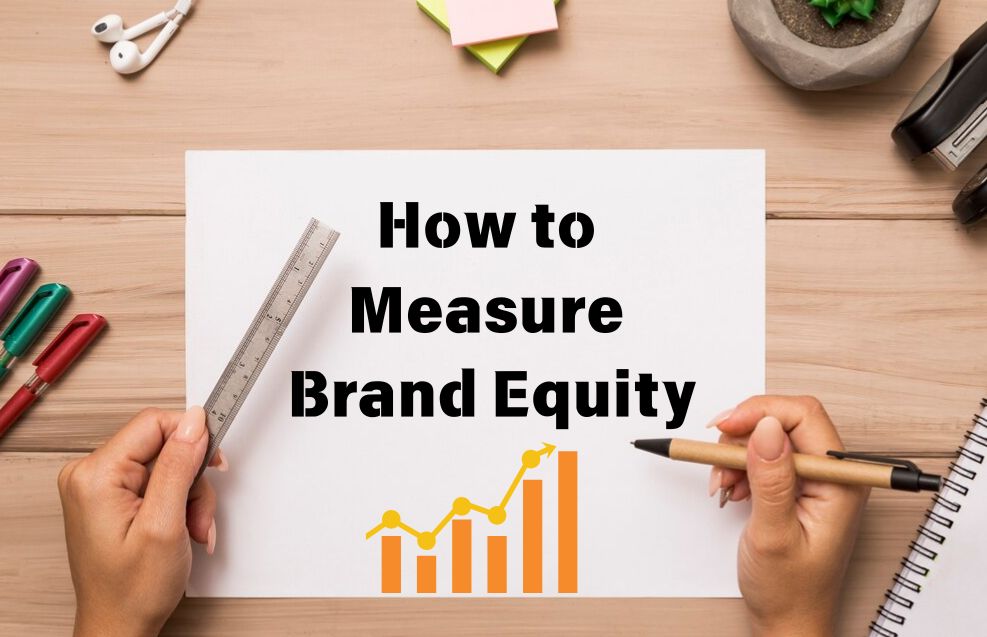Brand equity refers to the value a brand adds to a product or service. It is the perception that customers have of a brand based on their experiences, associations, and interactions with it. Strong brand equity can lead to higher customer loyalty, increased sales, and the ability to command premium prices. Measuring brand equity is essential for understanding its impact on your business and for making informed decisions about marketing and strategy. Here’s a deeper look into how you can measure brand equity effectively, along with real-world examples, tools, and additional insights.
1. Customer-Based Brand Equity (CBBE) Model
One of the most well-known frameworks for assessing brand equity is the Customer-Based Brand Equity (CBBE) model, developed by Kevin Lane Keller. This model suggests that brand equity is built through a series of steps, including:
- Brand Awareness: The degree to which customers can recognize or recall your brand. The higher the awareness, the stronger the brand equity.
- Brand Associations: The emotional or functional attributes that customers associate with your brand. These associations contribute to the overall image of the brand.
- Perceived Quality: The consumer’s perception of the quality of the brand’s products or services compared to competitors.
- Brand Loyalty: The extent to which customers continue to purchase from the brand over time.
Real-World Example:
Apple, for instance, exemplifies a strong CBBE framework. Its high brand awareness is supported by consistent, positive brand associations (e.g., innovation, design), perceived quality (premium, durable products), and brand loyalty (customers consistently upgrade to new products).
2. Brand Awareness Metrics
Brand awareness is often the first indicator of brand equity, as it reflects how well your brand is known in the marketplace. There are two key ways to measure brand awareness:
- Unaided Recall: When consumers are asked to name brands within a certain category without any prompts. A high level of unaided recall is a strong sign of brand equity.
- Aided Recall: Consumers are given a list of brands and asked to identify those they recognize. A high score in aided recall indicates solid brand recognition.
Case Study:
Coca-Cola consistently ranks high in brand awareness, often achieving high unaided recall in global surveys. Their brand is synonymous with soda, further bolstering its market dominance and brand equity.
3. Brand Associations and Perception
Brand associations are the perceptions and emotions that consumers connect with your brand. These associations can include attributes, benefits, or even specific qualities related to the brand. To measure brand associations:
- Surveys & Interviews: Conduct surveys to identify the attributes or qualities that come to mind when consumers think about your brand.
- Social Listening Tools: Use tools like Brandwatch or Sprout Social to monitor social media for discussions related to your brand.
- Projective Techniques: Employ creative exercises, like word associations or sentence completions, to uncover deeper brand associations that might not be immediately apparent.
Insight:
Negative brand associations, such as concerns about product quality or trust issues, can severely harm brand equity. If consumers associate a brand with low quality or bad customer experiences, it can negatively impact its long-term value.
4. Perceived Quality and Value
The perception of your brand’s quality can significantly influence its equity. It is often more critical than actual product quality since consumers’ perceptions drive purchasing decisions. To measure perceived quality:
- Customer Satisfaction Surveys: Gather feedback on product or service quality through surveys or focus groups.
- Net Promoter Score (NPS): Use NPS to measure how likely customers are to recommend your brand to others. Higher NPS scores often correlate with strong perceived quality.
- Product Reviews: Monitor customer feedback across online platforms, including social media, review sites, and e-commerce platforms, to gauge perceived quality.
Brand Spotlight:
Luxury brands like Louis Vuitton rely on perceived quality to maintain their brand equity. Customers associate the brand with exclusivity, craftsmanship, and premium value, which commands higher prices and reinforces brand loyalty.
5. Brand Loyalty Metrics
Loyal customers are the foundation of strong brand equity. High brand loyalty often correlates with repeat purchases, higher lifetime value, and positive word-of-mouth. To measure brand loyalty:
- Repurchase Intent: Gauge whether customers intend to buy from your brand again.
- Customer Retention Rates: Track how many customers continue to make purchases over time, compared to those who churn.
- Loyalty Program Participation: Analyze the success of your loyalty programs (e.g., rewards points, exclusive offers).
- Referral Rates: Measure how often customers recommend your brand to others, either through referral programs or organic recommendations.
Brand Insight:
Amazon’s Prime membership program is an excellent example of a loyalty program that strengthens brand equity. Prime members are more likely to stay loyal, engage more with the platform, and make frequent purchases.
6. Brand Valuation Models
For more advanced brand equity analysis, brand valuation models attempt to quantify brand equity in financial terms. Some of the popular methodologies include:
- Interbrand Methodology: This model combines financial performance, the role of the brand in purchase decisions, and brand strength to calculate brand value.
- Brandz Methodology: Developed by Millward Brown, this approach evaluates consumer perception and financial performance to estimate brand value.
- Market-Based Approach: This compares a brand’s financial performance to those of similar brands to assess its relative value.
Example:
Interbrand has consistently ranked brands like Apple and Coca-Cola highly based on their strong financials and brand strength, estimating Apple’s brand value at over $400 billion.
7. Social Media and Online Presence
In today’s digital age, brand equity is heavily influenced by social media and online presence. The way customers engage with your brand online can be a great indicator of brand equity. Key metrics include:
- Engagement Rate: The level of interaction (likes, shares, comments) with your brand’s social media content.
- Sentiment Analysis: The overall sentiment (positive, neutral, or negative) expressed in customer feedback and online mentions.
- Reach and Growth: Track the growth of your social media following and how far your content reaches over time.
Tools to Use:
- Hootsuite or Buffer for tracking social media engagement
- Brandwatch for sentiment analysis across platforms
- Google Analytics to measure the digital presence and traffic generated by social channels
8. Market Share and Financial Performance
Ultimately, strong brand equity leads to higher market share and better financial performance. Key metrics include:
- Market Share: A growing market share typically reflects strong brand loyalty and preference.
- Revenue Premium: Strong brand equity allows a company to charge premium prices compared to competitors.
- Profit Margins: Brands with strong equity often have higher margins due to customer willingness to pay for perceived quality.
Case Study:
Nike, with its strong brand equity, maintains a market leadership position in the athletic apparel sector and commands a premium price for its products.
9. Future of Brand Equity Measurement
As technology advances, new tools and methodologies are emerging for measuring brand equity. The rise of artificial intelligence, machine learning, and big data analytics allows brands to gain deeper insights into consumer behavior and predict changes in brand perception.
Emerging Trends:
- AI-powered Sentiment Analysis: Use machine learning models to automatically analyze customer sentiment and identify potential threats to brand equity.
- Predictive Analytics: Leverage big data to predict future changes in brand equity based on customer trends, competitor actions, and market dynamics.
Conclusion
Measuring brand equity is an ongoing process that requires a mix of qualitative and quantitative approaches. By combining methods like the CBBE model, surveys, social media analysis, and brand valuation techniques, businesses can get a comprehensive understanding of their brand’s position in the market.
Whether you are assessing brand awareness, building loyalty, or calculating financial brand value, regularly measuring and adjusting your brand strategy is essential for sustained growth. Investing in the measurement of brand equity allows businesses to not only improve their current standing but also develop long-term strategies for building a brand that resonates with customers and stands the test of time.

